
Extrudeuse de feuille de plastique, 35 PS, ligne d'extrusion
37 204,36 € - 79 059,27 €
Min Order: 1 jeu
Shipping per piece: 2 790,33 €
Screw Design: Single-Screw
CNSupplier
17 yrs

Machines d'extrudeuse de rouleau de feuille PET PLA PVC PP PBAT Ligne d'extrusion transparente de feuille Machine de fabrication de feuille plastique PET
16 741,97 € - 27 903,27 €
Min Order: 1 jeu
Screw Design: Single-Screw
Screw L/D Ratio: 6.50069444444444
CNSupplier
1 yrs


Machine à fabrication de câbles en fibre optique, noyau simple simple, ligne de production
27 903,27 €
Min Order: 1 jeu
CNSupplier


Ligne de production de panneaux muraux en marbre décoratif intérieur en PVC ACM Machine d'extrusion de panneaux de marbre artificiel
16 741,97 € - 27 903,27 €
Min Order: 1 jeu
Screw Design: Single-Screw
Screw L/D Ratio: 6.50069444444444
CNSupplier
1 yrs


Machine de fabrication de produits composites en bois et plastique/ligne de Production d'extrusion de panneau de profil décoratif de porte de Pvc Pe Pp Wpc
22 322,62 € - 26 973,17 €
Min Order: 1 pièce
Screw Design: Double-Screw
Screw L/D Ratio: 0.917361111111111
CNSupplier
3 yrs

bois et plastique plaque extrusion machineplaque en plastique extrusion t diemachine finning extrudémachines de plaque extrusionmachine à extrusion de plaquepvc couches plaque extrusion machinesplaque en plastique extrusion machinemini feuille extrusion machinemachines à grande vitesse extrusiongpps feuille extrusion machinepièces de machine à extrusionprix de machine à extrusionmachine extrusion pfamachine à extrusion à grande vitessemachine extrusion shantou

Machine d'extrusion de feuilles PET en plastique/machine de fabrication de feuilles PET par thermoformage
204 623,98 €
Min Order: 1 jeu
Screw Design: Double-Screw
Screw L/D Ratio: 0.917361111111111
CNSupplier


Machine d'extrusion de plaques PP, PE, ABS, PVC, extrusion
50 690,95 € - 51 156,00 €
Min Order: 1 jeu
Screw L/D Ratio: 1.25069444444444
CNSupplier
14 yrs

Machine d'extrusion de panneaux de Construction, pièces, PP PE, creux, pour Construction, plaques, équipement
186 021,80 €
Min Order: 1 pièce
CNSupplier
4 yrs

Machine d'extrudeuse de panneaux en tôle creuse PP Prix de la machine d'extrusion de plaque de plastique PP
55 803,75 € - 93 009,97 €
Min Order: 1 jeu
Screw Design: Single-Screw
Screw L/D Ratio: 1.50069444444444
CNSupplier
17 yrs

Ligne de production de feuilles de plastique Ligne d'extrusion de plaques de plastique Feuille PE PP faisant la machine
42 785,02 € - 46 505,45 €
Min Order: 1 jeu
Screw Design: Single-Screw
Screw L/D Ratio: 1.25069444444444
CNSupplier
2 yrs

Machine d'extrusion de panneau de Construction de grille de plaque de Section transversale creuse en plastique PP PE
119 519,01 € - 137 656,14 €
Min Order: 1 jeu
Screw Design: Single-Screw
Screw L/D Ratio: 1.37569444444444
CNSupplier
2 yrs
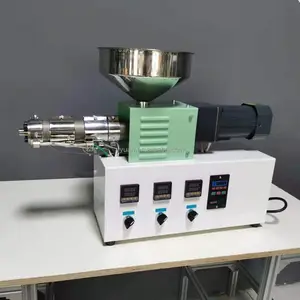
Machine d'extrusion de vis solo, appareil de laboratoire en plastique, SJ25
Prêt à être expédié
790,60 €
Min Order: 1 jeu
Shipping per piece: 317,96 €
Screw Design: Single-Screw
CNSupplier
8 yrs
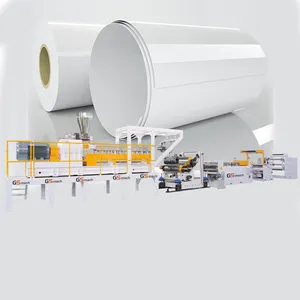
Machine d'extrusion de feuilles de plastique PP PET PP PC PS
73 013,56 € - 83 709,81 €
Min Order: 1 jeu
Screw Design: Double-Screw
CNSupplier

En plastique PP Coffrage De Construction L'extrusion Faisant La Machine
98 591,56 € - 99 521,67 €
Min Order: 1 jeu
Screw Design: Single-Screw
Screw L/D Ratio: 1.37569444444444
CNSupplier

Machine automatique de production de rouleaux de film d'emballage à bulles d'air en mousse PE extrudée Film d'emballage à bulles Machine de fabrication
54 969,45 € - 55 806,54 €
Min Order: 1 jeu
Screw Design: Single-Screw
CNSupplier
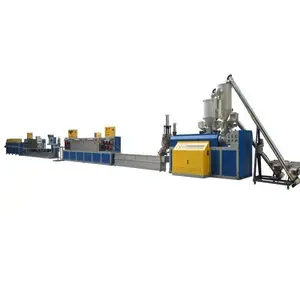
Recyclage des animaux de compagnie, Machine pour la fabrication de lanière, en plastique, PET, Extrusion de bande, couvre-emballage
18 602,18 €
Min Order: 1 unité
Screw Design: Single-Screw
Screw L/D Ratio: 1.37569444444444
CNSupplier
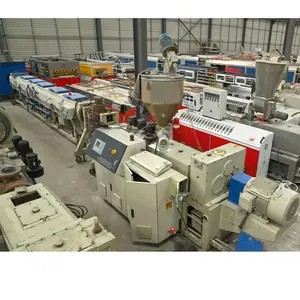
Extrudeuse de tuyaux en plastique PVC HDPE PP PPR Ligne de production d'extrudeuse de plastique Machine de fabrication de plastique Pp Pvc
22 322,62 € - 23 252,73 €
Min Order: 1 jeu
Screw Design: Double-Screw
Screw L/D Ratio: 1.04236111111111
CNSupplier

Machine à extrusion de bracelets d'animaux, fabrication de ceintures d'emballage d'animaux
26 973,17 € - 27 903,27 €
Min Order: 1 jeu
Screw Design: Single-Screw
CNSupplier

Extrudeuse de filament 3d ligne d'extrusion d'imprimante 3D extrudeuse de filament PLA
1 860,22 € - 2 046,24 €
Min Order: 1 jeu
Screw Design: Single-Screw
CNSupplier

Machine de fabrication de bandes de chants en PVC ligne de production de bandes de chants en pvc machine d'impression de bandes de chants en pvc
13 021,53 € - 13 951,64 €
Min Order: 1 jeu
Screw Design: Single-Screw
Screw L/D Ratio: 1.16736111111111
CNSupplier
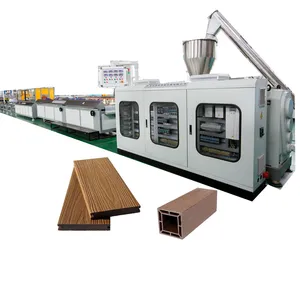
Machine d'extrusion de profil en plastique pour la fabrication de parquets et de panneaux muraux en plastique PP/PE recyclé et déchets de bois
34 236,82 € - 37 012,78 €
Min Order: 1 jeu
Screw Design: Double-Screw
CNSupplier
16 yrs

Machine d'extrusion de plastique 3D, petite extrudeuse de matériau polymère de bureau en plastique de laboratoire à vis unique
Prêt à être expédié
837,10 € - 1 013,82 €
Min Order: 1 pièce
Shipping per piece: 87,20 €
Screw Design: Single-Screw
CNSupplier

Machine de fabrication d'extrudeuse de feuille de toit de couleur ondulée, en plastique PVC, en PVC, en PVC, en PVC
31 623,71 € - 32 553,82 €
Min Order: 1 jeu
Screw Design: Double-Screw
CNSupplier

Machine à fabriquer des plaques de bois et de plastique, extrusion pour bois, panneau large composite
Prêt à être expédié
31 623,71 € - 32 553,82 €
Min Order: 1 plant
Shipping per piece: 9,31 €
Screw Design: Double-Screw
Screw L/D Ratio: 1.37569444444444
CNSupplier
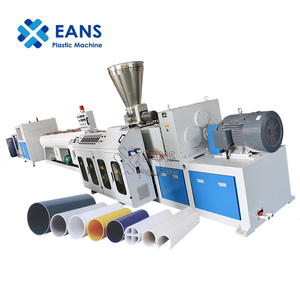
Tuyau électrique automatique de tube de conduit de PVC de plastique de bon prix faisant la machine
18 416,16 €
Min Order: 1 jeu
Screw Design: Double-Screw
CNSupplier
6 yrs

PE bois WPC profil faisant la machine
Prêt à être expédié
27 903,27 €
Min Order: 1 jeu
Shipping per piece: 44,22 €
Screw Design: Double-Screw
Screw L/D Ratio: 5.50069444444444
CNSupplier

Machine de fabrication de pénis, ligne de Production de gode, Machine de fabrication de gode, extrudeuse en plastique, Machine de Production d'extrusion
5 301,63 € - 5 580,66 €
Min Order: 1 pièce
Screw Design: Single-Screw
Screw L/D Ratio: 1.25069444444444
CNSupplier
4 yrs

Microscope WPC, prix des plantes WPC, pour la fabrication de produits à base de plastique et de bois liquéfié
36 828,64 € - 41 432,21 €
Min Order: 1 jeu
Screw Design: Double-Screw
Screw L/D Ratio: 0.917361111111111
CNSupplier
14 yrs
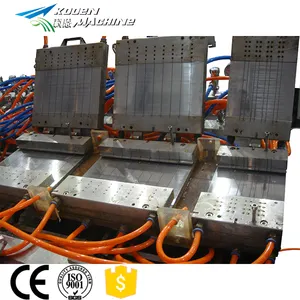
Machine d'extrusion de porte et fenêtre, en PVC, WPC, équipement pour fabrication de d'extension de meubles
32 553,82 € - 35 344,15 €
Min Order: 1 jeu
Screw Design: Double-Screw
Screw L/D Ratio: 5.50069444444444
CNSupplier

Extrudeuse de vis unique en plastique, machine pour extrusion de tuyaux PE, prix à vente
12 091,42 € - 13 951,64 €
Min Order: 1 jeu
Screw Design: Single-Screw
CNSupplier

Sumino 1900mm PE Stone Paper Making Machine Stone Paper Machinery
465 054,50 € - 1 395 163,50 €
Min Order: 1 jeu
Screw Design: Single-Screw
CNSupplier
1 yrs

Boîte à lunch en PLA, 10 sachets biodégradables, pour graines de maïs, riz, PP plateau à pizza, machine de fabrication pour aliments
29 763,49 € - 32 553,82 €
Min Order: 1 jeu
Screw Design: Double-Screw
Screw L/D Ratio: 2.29236111111111
CNSupplier

Granulateur plastique composé TPE TPU EVA
24 926,93 €
Min Order: 1 jeu
Screw Design: Double-Screw
Screw L/D Ratio: 2.29236111111111
CNSupplier

Machine de fabrication de tuiles de TOIT machine de fabrication de tuiles de toit en PVC ASA glaçure machine de fabrication de tuiles de toit en résine synthétique sans pilote
39 064,58 € - 53 946,33 €
Min Order: 1 jeu
Screw Design: Double-Screw
Screw L/D Ratio: 1.25069444444444
CNSupplier
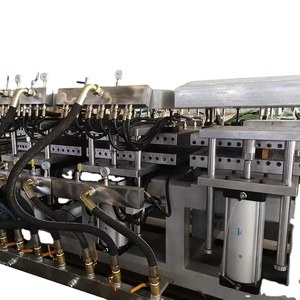
Machine de fabrication de draps plastiques, avec prix coûelure, travail de construction, ligne de production, plastique
180 348,14 € - 225 458,43 €
Min Order: 1 jeu
Screw Design: Single-Screw
Screw L/D Ratio: 1.16736111111111
CNSupplier
13 yrs

Machine de fabrication de filament 3D modèle laboratoire/Machine d'extrusion de filament d'impression ABS PLA
18 602,18 € - 21 299,50 €
Min Order: 1 jeu
Screw Design: Double-Screw
CNSupplier
7 yrs

Fermeture à glissière en plastique Extrudeuse
5 580,66 € - 9 301,09 €
Min Order: 1 jeu
Screw Design: Single-Screw
Screw L/D Ratio: 1.25069444444444
CNSupplier
5 yrs

Machines de film TPU EVA TPE PVA machine d'extrusion de film moulé par pp machine combinée d'extrudeuse de film de coulée
134 865,81 €
Min Order: 1 jeu
Screw Design: Single-Screw
CNSupplier
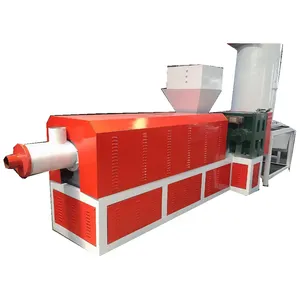
PE en plastique PPR tuyau Extrudeuse machine
3 720,44 €
Min Order: 1 jeu
Screw Design: Single-Screw
Screw L/D Ratio: Unapplicable
CNSupplier

Vis unique petite utilisée PP PS PE en plastique stationnaire feuille feuille extrudeuse machine
12 649,49 €
Min Order: 1 jeu
Screw Design: Single-Screw
CNSupplier
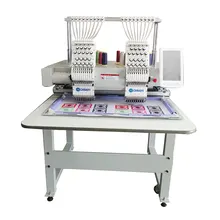


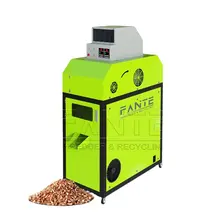

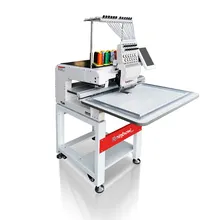

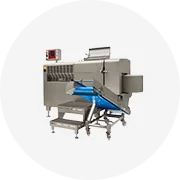






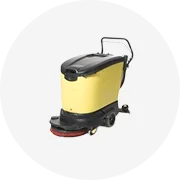


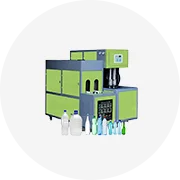
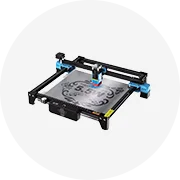

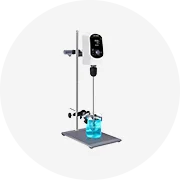
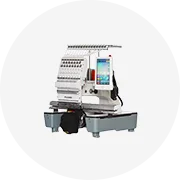









 浙公网安备 33010002000092号
浙公网安备 33010002000092号 浙B2-20120091-4
浙B2-20120091-4